Billings, Montana For Real
In the last post I warmed up for a discussion of Billings, Montana but didn't actually get to it. In this one, I will.
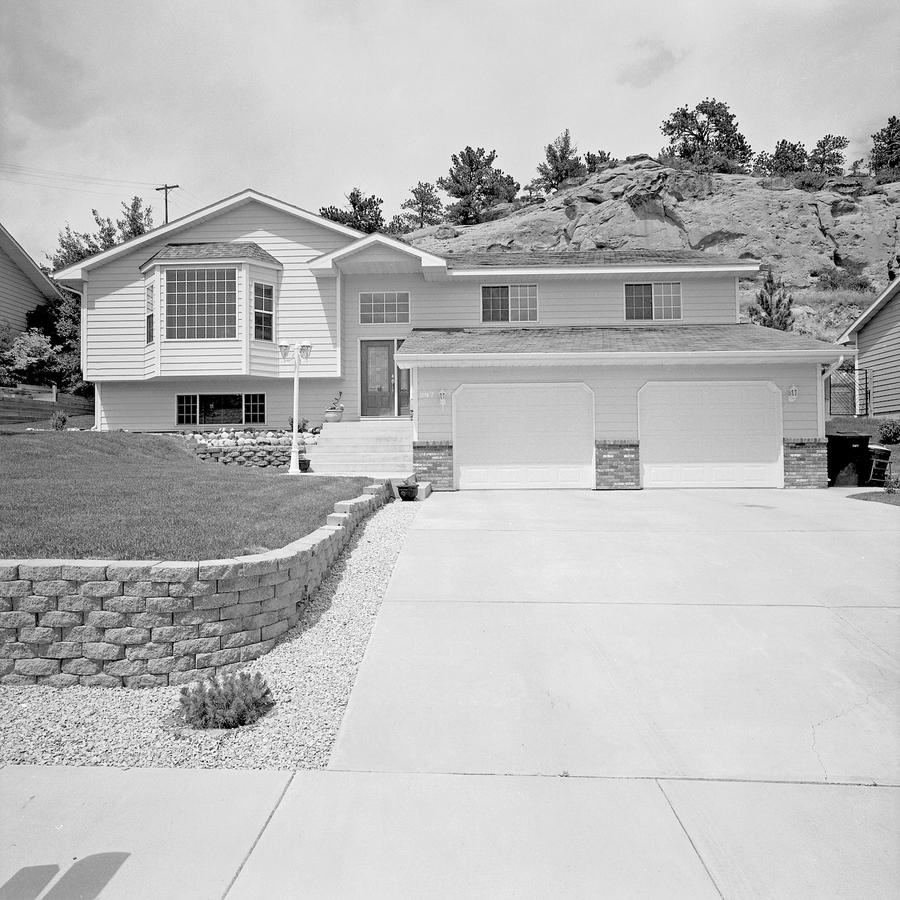
Billings starts off simply enough: a clearly residential area with some sort of rock or hill behind it. It is bright, almost mid day-like in the way the light falls on the development house practically centered in the frame. I also pointed the square format camera up a little as the horizontal center of the frame is at the base of the two car garage. The photograph is descriptive and open tonally, meaning no dark secrets, no hidden meanings.
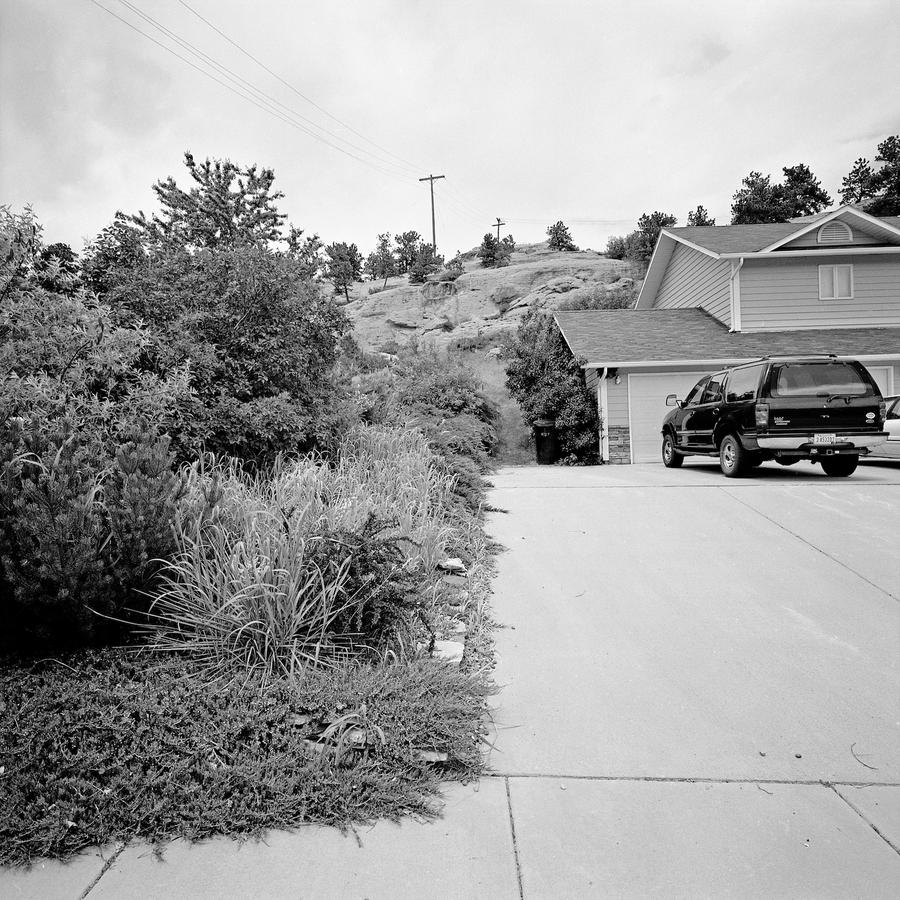
The second picture reinforces the first in that, once again, the bluff behind the houses seems to be a constant. There is also a hint of some future content to come: the wires and electrical poles off in the distance. This picture establishes an expectation that the next picture will in fact show us a house with the bluff behind it:
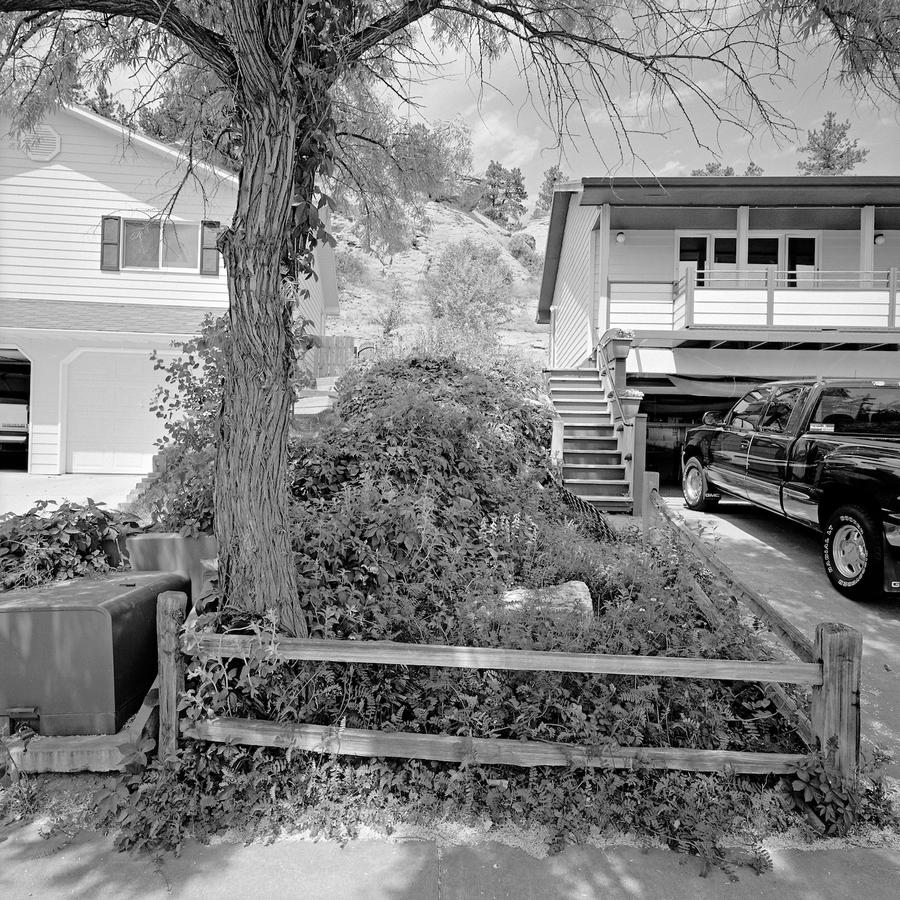
which in fact it does, although here it is far more obscure and secondary compared to the prominence of the truck on the right and the fenced in jungle of growth in the foreground. I have a belief which is that if you precondition the viewer to look for something, that will drive them to find it in subsequent pictures in the series, or to work to figure out why it isn't there.
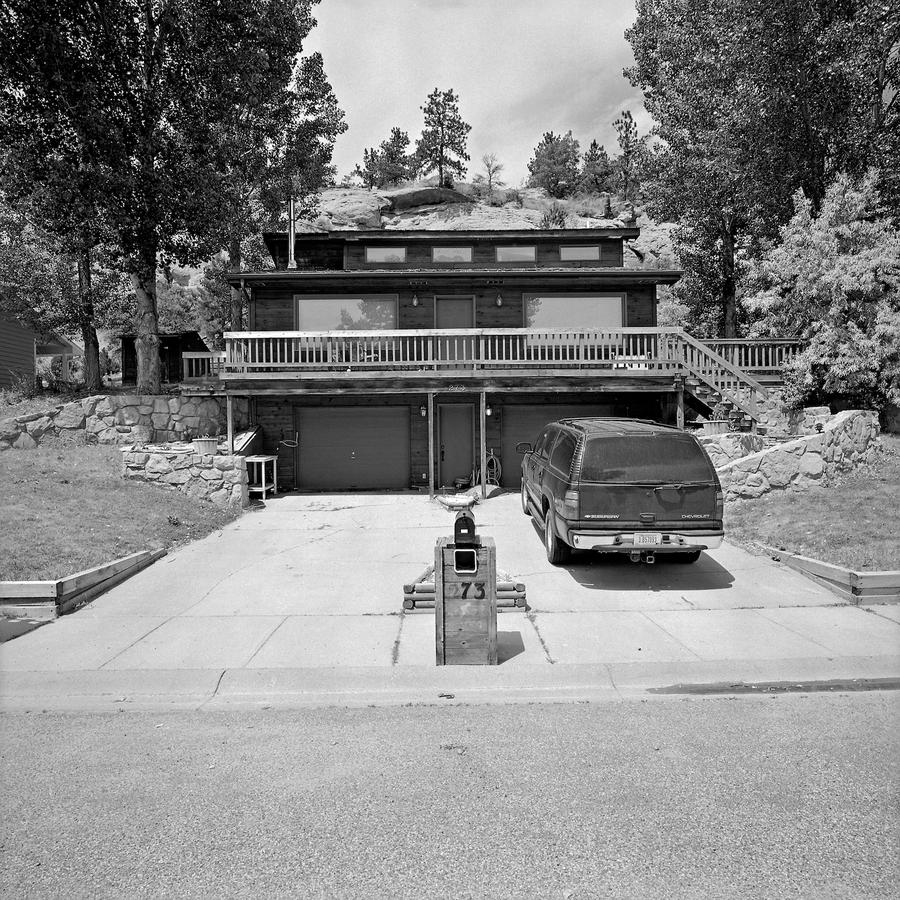 The next photograph, which is # 73 on this street, brings us back to the house itself having prominence in the frame. To my eye the small amount of rock behind this house seems to be there to support or compliment the really brutal face of the house with its two garage doors, two big windows above these and four windows above that. This is such an "in your face" house compared to the other ones that are far more standard. This house also seems to be built into the hill more than the others preceding it.
The next photograph, which is # 73 on this street, brings us back to the house itself having prominence in the frame. To my eye the small amount of rock behind this house seems to be there to support or compliment the really brutal face of the house with its two garage doors, two big windows above these and four windows above that. This is such an "in your face" house compared to the other ones that are far more standard. This house also seems to be built into the hill more than the others preceding it.
One of the things I was up to here was that I felt that this was an unusual thing, this residential community either nestled up against this rock wall or actually built into it. If so, then my task was to wrestle with that and to play with that as a visual issue in the pictures I made of the area, and to use the constancy of the bluff behind the houses as a way to bring continuity to the pictures. This is something anyone would want to do, to bring a connection from picture to picture in a set or a series. It is part of the reason I loosely define this way of working as narrative in form.
The next one again reinforces that we are in a similar pattern of looking here. I remember noticing the hanging kayak and thinking that was really clever storing it that way. So, I believe this is all about having a belief in the power of observance, being keyed into looking, really looking, and that photography can do that, display close observation. Ultimately some of my pictures are about what I do to the thing I photograph and some are more about being an aware observer. This is the latter.
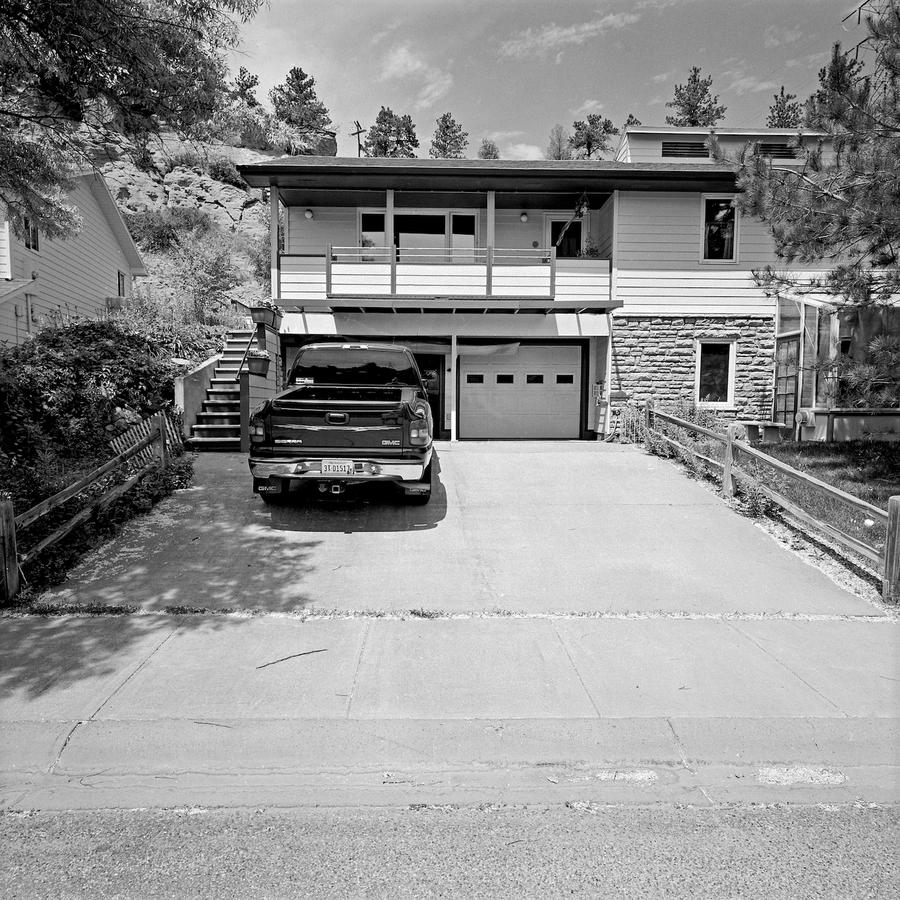
I also want to draw attention to the printing in these pictures. It is very bright and open and this is highly deliberate. Compare this to the earlier days of Nantucket or Yountville and, although the camera may be the same and they are all black and white, there really were some huge changes between those eartly 80's series and this one from Billings in 2004.
I am not going to show each picture in the series here as they are represented in full on the site but suffice it to say that they continue along with this same theme prevailing until I got to here:
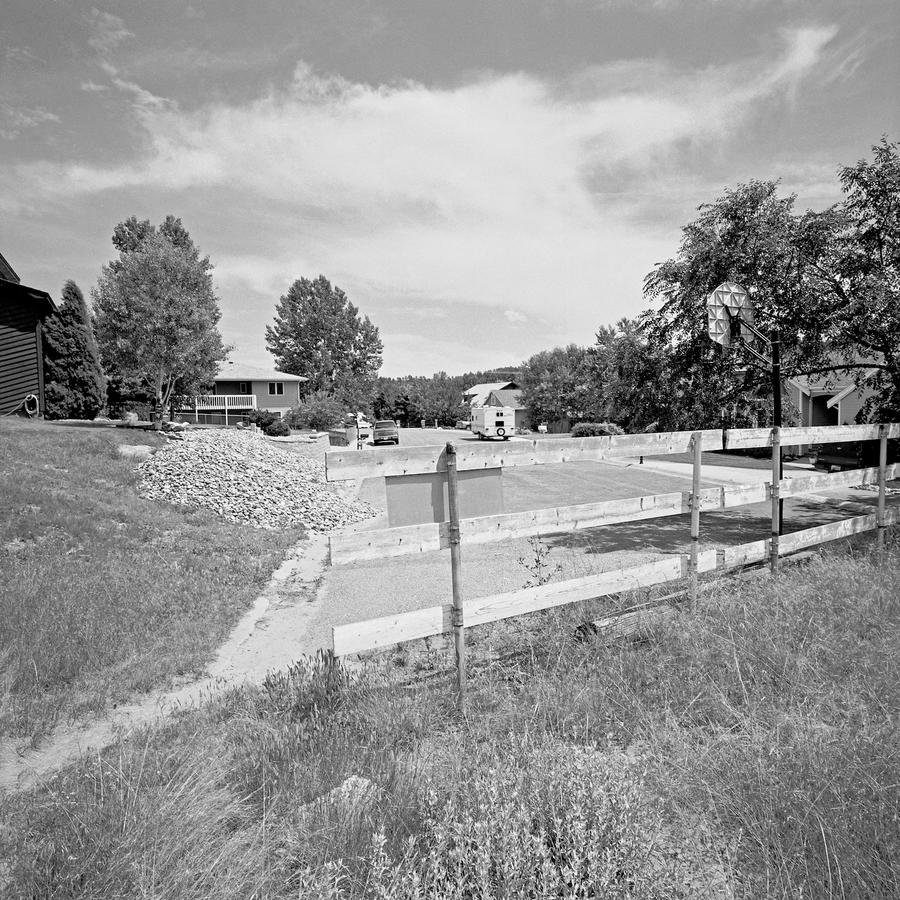 where I turned 180 degrees and photographed where I'd just come from, also to show that I had gotten to a dead end but not why the street ends there.
where I turned 180 degrees and photographed where I'd just come from, also to show that I had gotten to a dead end but not why the street ends there.
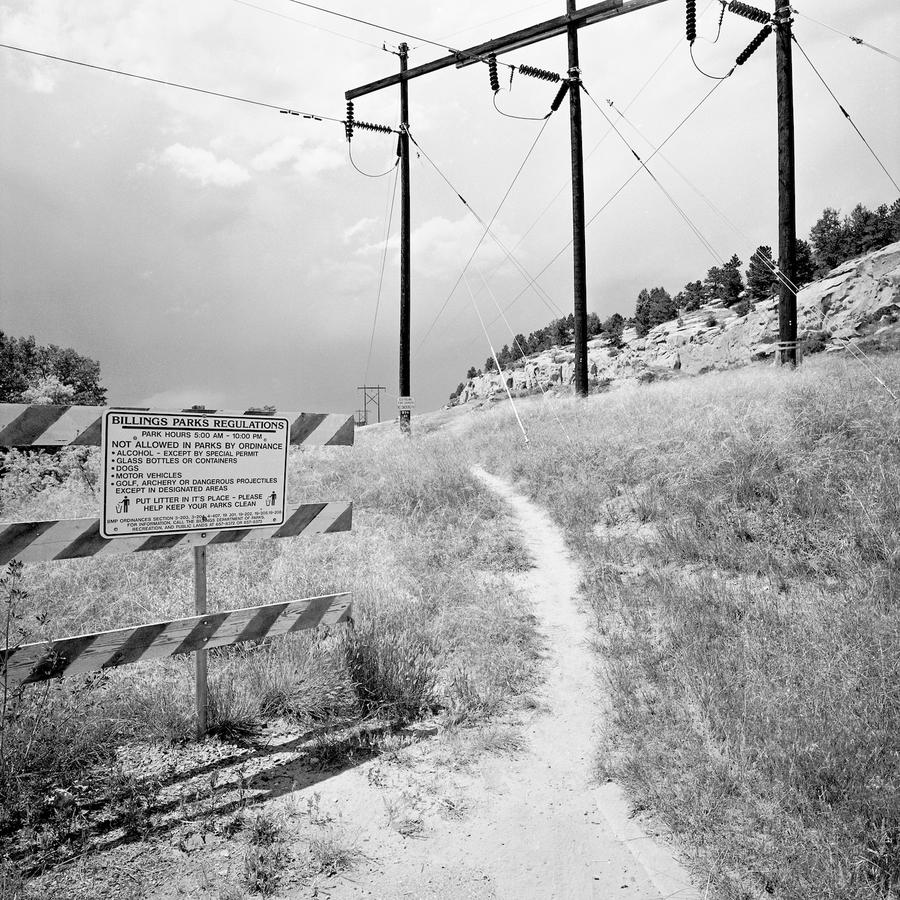
This one gives us the answer, of course. It is one of those parks created by letting locals use the path under the high tension electrical lines for dirt bikes and running.
Now, as I approached the ending of the series I found myself in a maize of wires:
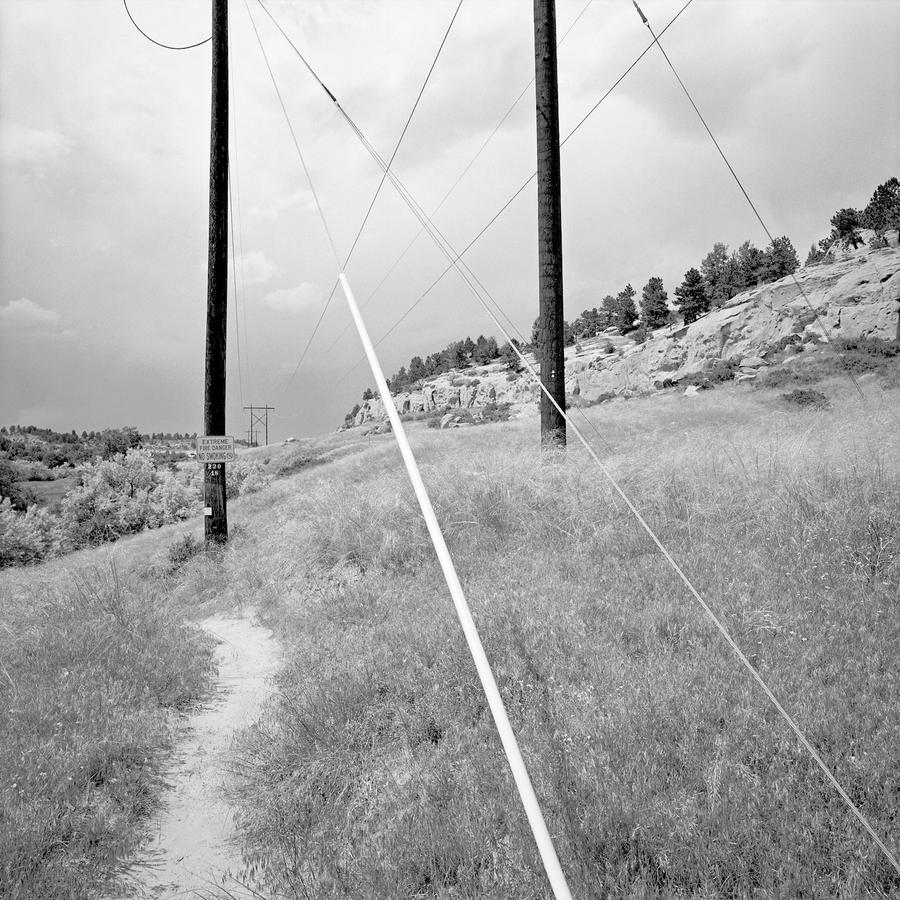 Ironic, at least to me, as there was actually far less confinement in the earlier pictures of the houses but here things were very much restricted by all the wires in the way. At the same time, an approaching thunderstorm was darkening the sky, over shadowing the area with a sense of something big coming.
Ironic, at least to me, as there was actually far less confinement in the earlier pictures of the houses but here things were very much restricted by all the wires in the way. At the same time, an approaching thunderstorm was darkening the sky, over shadowing the area with a sense of something big coming.
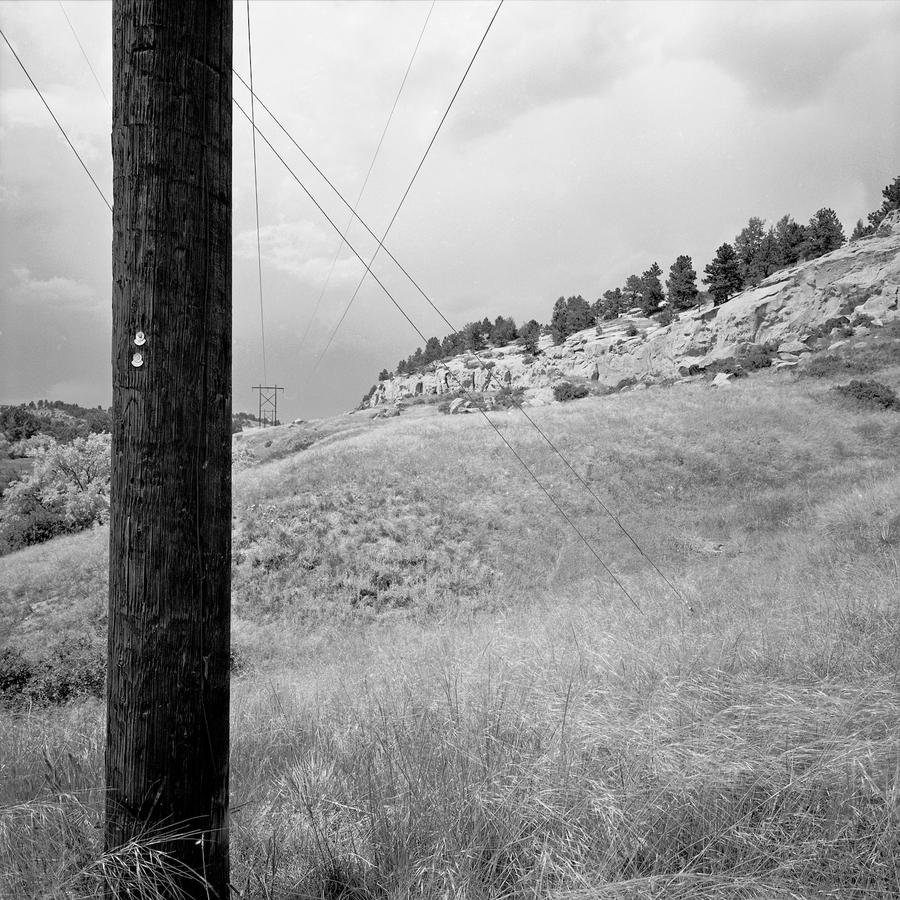
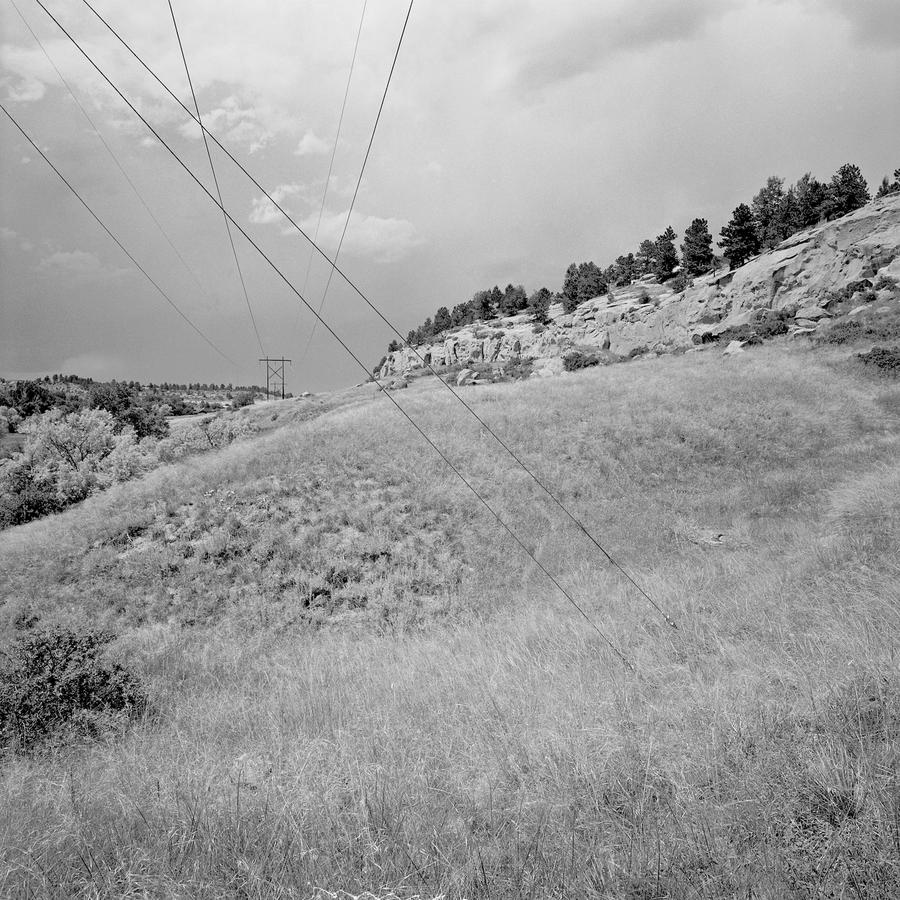
What was my interest here? Going from "closed in" to "opening out" but from one kind of confinement to another is primary for me. But it would also would have seemed irresponsible to me to not continue the bluff to its end, which I did in the above picture.
One of the things that is wonderful for me about going back into some of these now older bodies of work, and then needing to explain them a little as I share them with you in the blog is that I look at them again too. I don't know if you feel this from some of your earlier works but it often is like looking at the work as though someone else made it, or through some lens where time has altered the group's meaning.
If you've enjoyed this please then do take a look at the full set on the site: Billings, Montana and remember, a big screen will help you to see these in full. If you're on a Mac, clicking Command + will get the image bigger on your screen too.
Next up? Vignole, Italy
